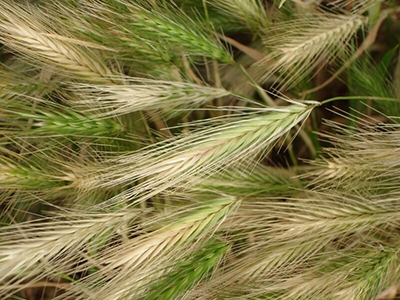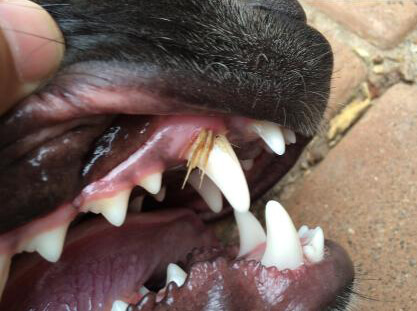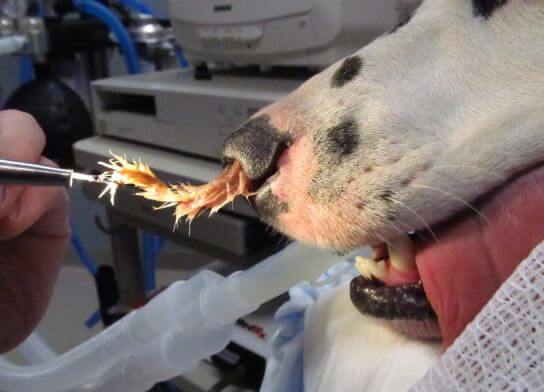Getting to love and care for a dog is a special part of life that is difficult to replace. One special way of ensuring you give your dog a happy life is taking them to an open field, unhooking their leash, and letting them roam free (in a safe area, of course). Dogs love the feeling of running freely and exploring their surroundings, and as their human caregivers, we certainly love giving them those experiences.
The Threat

Foxtails / Source: The Dogington Post
The foxtail plant is a grass-like weed with barbed razor-sharp needles that are designed to burrow into the ground with the seed. While this is certainly a wonderful phenomenon of nature, it can also be very dangerous to dogs, as those needles can burrow into your dog’s skin, causing harmful lacerations, or even get inside the dog’s body.

Source: Buster’s Vision Animal Education
According to WebMD.com:
the danger of foxtails goes beyond simple irritation. Because these tough seeds don’t break down inside the body, an embedded foxtail can lead to serious infection for your dog. It can even lead to death if left untreated….Embedded foxtails can cause discharge, abscesses, swelling, pain, and death.”
Click Here to Read About Prevention and Treatment on Page 2
Prevention and Treatment

Frey Pet Hospital extracted this foxtail from dog Harley’s nose
The seeds can be hard to find in a dog’s fur, especially dogs with long or curly fur or long ears, so it’s important to check your dog thoroughly. Of course, the best treatment is just staying away from areas with foxtails; take the time to check an area before letting your dog roam around, whether on or off the leash. In particular, stay away from overgrown, grassy areas.
- Feet: Foxtails can easily become stuck in your dog’s paw pads and even embedded between their toes. Check for for foxtails if you notice swelling, limping, or if your dog is incessantly licking the area.
- Ears: Foxtails can burrow so deep inside the ear that you may not even see it. If your dog is shaking his head, tilting it to the side, or scratching constantly at an ear, it may be time to see the veterinarian. The vet can look inside your dog’s ear with a special scope.
- Eyes: Redness, discharge, swelling, squinting, and pawing may all be signs that a foxtail is lodged within your dog’s eye. Take your dog to the vet to have them look at the issue.
- Nose: If there is discharge from your dog’s nose, or if your dog is frequently and intensely sneezing a foxtail may be lodged in your dog’s nose. Like with the other areas, it may be impossible to see unless your veterinarian takes a look.
- Genitals: If you notice your dog constantly licking at its genitals, foxtails may be the cause.
- Mouth: A foxtail can get stuck inside your pooch’s mouth or gums.

